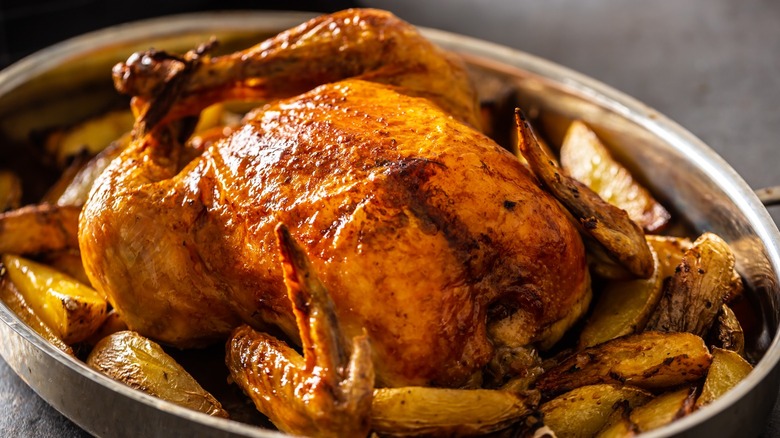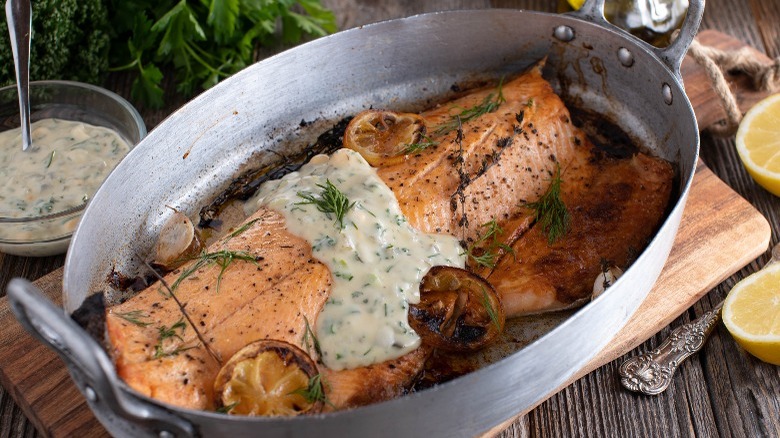What Makes A Roasting Pan Stand Out From A Regular One?
If you're reading this, chances are you don't own a roasting pan. Maybe you're trying to decide whether or not to buy one. Or perhaps you own one but it's collecting dust. Whatever the case may be, for the uninitiated, a roasting pan may appear wholly unnecessary, especially if it's only going to be used once or twice a year. You may wonder, "Are they really that different from a baking pan or casserole dish? Do I even need one?" But understanding what sets a roasting pan apart from all your other pans may help you decide what role it will play in your kitchen.
Roasting pans differ from regular pans due to their large size, a necessity to accommodate cooking whole turkeys, hams, large beef or lamb roasts, and whole fish (plus all those veggies!). But their versatility extends far beyond this narrow focus and can include everything from sizeable casseroles like deep-dish lasagna and enchiladas to big batches of appetizers or baked desserts. While the average roasting pan is 16 inches long, they typically range from 14-18 inches, with the largest able to handle a 20-pound turkey.
Since they're built for roasting, they're made from the best heat-conducting materials. Primarily, this is stainless steel, though aluminum, cast iron (sometimes ceramic-coated), carbon steel, and even glass are also used. Their size and material make roasting pans quite heavy, especially once loaded with food. So it's a good thing they come with handles, another distinction from other pans.
Key differences between a roasting pan and other pans
Aside from their size and weight, roasting pans contrast with other pans, such as baking dishes, due to their depth. High sides, ideally around three inches, not only aid in trapping in heat needed for roasting but also prevent cooking juices from escaping and making a mess. Another way of ensuring all those lovely drippings remain in the pan is to make use of the lid that most roasting pans come with, though this will change the cooking method from roasting to steaming and is mostly reserved for times when the meat has browned on the outside before the optimal inner temperature has been reached.
Any good roasting pan comes with an invaluable accessory — the roasting rack. It promotes air circulation, allowing heat to distribute evenly on all sides of the food and giving a lovely outer crispness to meats, while helping lock in their juices. It also keeps the bottom of meat from getting soggy, as it lifts it away from drippings collecting in the bottom of the pan, where they can be used in pan gravy.
If you're still feeling unsure about investing in a roasting pan (some people simply can't spare the extra space), there are plenty of alternatives you can use while you make up your mind. None of them, however, have all the bells and whistles (read: handles and racks), that make a roasting pan stand out from the crowd.

